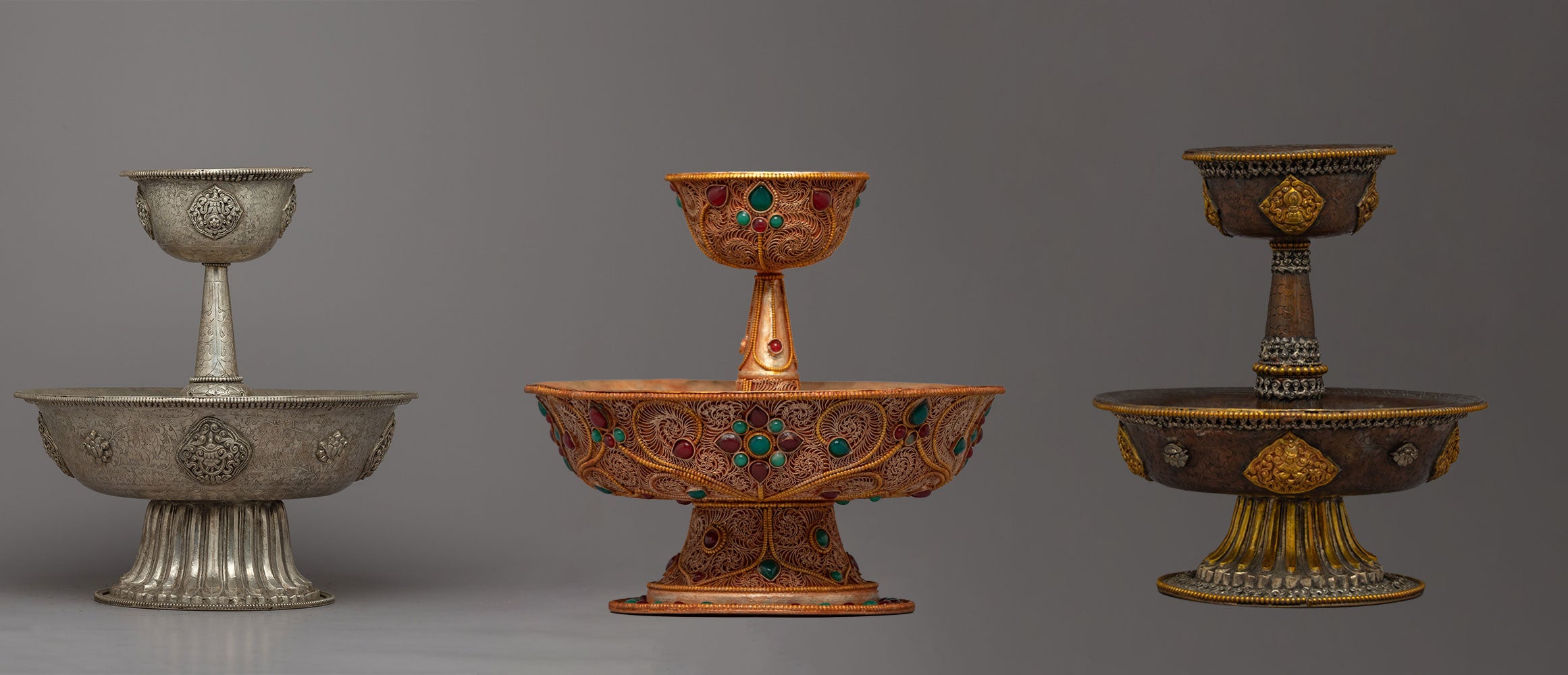The Art of Serkyem: Dive into the Mystical World of Tibetan Offering Ceremonies
Serkyem offering is a unique and significant Buddhist ritual, particularly within the Tibetan tradition. This ritual holds profound meaning and is performed with great reverence by practitioners.
Translated as "Golden Drink Offering," serkym combines "ser," meaning golden, and "kym," referring to the beverage-typically tea or alcohol—are offered to deities and Dharma guardians.. Another English designation for this ritual is "Black Tea," aligning with the common substance used in the offering.
In monasteries and among individual practitioners, this ceremony has a strong cultural foundation in Tibet. It is a way to connect with the divine, ask for direction, and show appreciation in addition to being an act of offering.
Key Takeaways
- Serkyem offering is an essential ritual in Tibetan Buddhism, symbolizing offering food and drink to deities and protectors.
- It is believed to bring blessings, protection, and the fulfillment of spiritual and worldly wishes.
- The offering involves specific items and a ceremonial procedure, reflecting deep symbolic meanings.
Historical Background
Click here to view our Serkyem Set
- Origins of the Practice
Serkyem giving has been an integral part of Tibetan Buddhism, originating in Tibet for generations. It developed from prehistoric rites and was incorporated into Buddhist traditions when Buddhism expanded throughout Tibet. The pre-Buddhist Bon tradition, in which sacrifices were performed to regional spirits and deities, is where it all began.
- Evolution Over Time
The Serkyem offering has changed over time to accommodate numerous schools of Tibetan Buddhism, each of which has added its technique and interpretation to the ritual. As Tibetan Buddhism extended to other areas, including the Himalayan highlands and Mongolia, these civilizations embraced and modified the practice.
Spiritual Significance
- Connection with Dharma Protectors
The main goal of the Serkyem offering is to please Dharma guardians and ask for their blessings. These guardians are said to keep harm and impediments from the Dharma and its practitioners. They are frequently shown as angry gods, signifying their ability to conquer challenges.
- Symbolism in Buddhism
As a spiritual trade, the sacrifice expresses the practitioner's esteem and dedication to the gods and protectors. Additionally, it is an indication of the practitioner's generosity and sharing spirit, which is a cornerstone of Buddhism.
The Ritual Procedure
Preparation of the Serkyem
| Item | Description |
| Vessel | A two-part vessel, often ornate and symbolic |
| Liquid | Traditionally tea or alcohol |
| Additional Offerings | Incense, food or other symbolic items |
The preparation of the Serkyem is a mindful process, requiring the practitioner to be in a state of reverence and concentration. Usually made of brass or copper, the vessel is cleaned and consecrated before the ritual.
The Offering Process
Click here to view our Tibetan Ritual Items
- Filling the Vessel: The lower part of the vessel is filled with the chosen liquid. This act is done with mindfulness, focusing on the intention behind the offering.
- Chanting Mantras: Specific mantras are recited to invoke the protectors. These mantras vary depending on the deity or protector being invoked.
- Pouring the Offering: The liquid is poured from the upper part of the vessel in a steady stream, symbolizing an unending flow of blessings and offerings.
Symbolism in Serkyem Offering
- The Vessel
Deep symbolism is frequently found in the Serkyem vessel's design, wherein distinct portions stand for different facets of Buddhist thought. The bottom portion represents the earth, the higher section the skies, and the liquid stream the link between the sacred and the profane.
- The Liquid
Choosing a beverage to drink—tea or alcohol—has symbolic connotations, frequently signifying change and clarity. While alcohol, with its transforming qualities, symbolizes change and impermanence, tea, a typical beverage, represents humility and simplicity.
Benefits of Serkyem Offering
- Spiritual Protection: It offers defense against evil influences and impediments to the spiritual journey.
- Merit Accumulation: It is believed that making offerings helps one gain merit, which is necessary for spiritual advancement.
- Desires Fulfilled: When making Serkyem offerings, practitioners frequently have particular intents or desires in mind, and they ask the guardians' blessings to help them come true.
- Improved Spiritual Journey: Consistent Serkyem giving practice aids in fortifying the practitioner's relationship with the divine and enhancing their spiritual path.
Buddhism's Serkyem offering is not only a ceremonial gesture but a profound practice that symbolizes respect, dedication, and the rich symbolism of the path. It continues to be an essential component of the Tibetan Buddhist tradition, whether it is carried out at a monastery or a private shrine.
It fosters a spiritual bond between practitioners and the deity and bestows blessings and protection. This practice helps preserve a rich cultural and religious legacy and enhances the practitioner's spiritual life.











